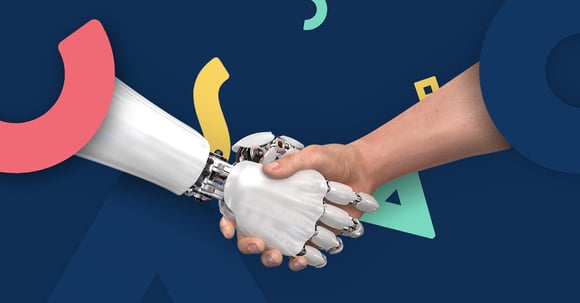Upskilling is the process when an employee achieves new skills to do her or his job better. Reskilling is when an employee achieves skills to handle another job or role in another department but within the same company. That is basically the difference between upskilling and reskilling.
But why do we talk so much about both upskilling and reskilling these days? And why are they so important?
Upskilling - Why Is it Important?
Upskilling has always been important. The future constantly changes the way we work, and that is why we also need new skills to keep up and do our jobs even better. The great revolutions of the labor market are good examples of why learning new skills are important. When the industrial revolution from the late 1700s to the beginning of the 1800s, people had to earn new skills to handle machinery that could do the job more efficiently than the usual manual work.
Likewise, a special day in 1971 was groundbreaking, when the first email was sent from one computer to another. Over the years, email slowly moved its way into our work desks, and as soon as we learned how to handle this new magic tool of communication, our daily tasks went more smoothly, faster, and efficient.
Today, automation and robots change our tasks even faster than we imagined. And it is hard to keep up with the evolution these days because new digital tools are developed by the minute. However, even though you might have seen too many scary movies about robots taking over the world, this is not necessarily the case in real life.

If you upskill and learn how to handle the new tools and automated features in your daily work systems, for example, a project management system or a learning management system, you often release time to handle more fun tasks in your workday. Think about it: Automation is not created to make your workday suck. No, the features are created to handle the mundane and boring tasks, that you are not thrilled to do.
Even so, worries about automation taking over too many of the daily tasks are common with good reason. That is why reskilling employees comes in handy so that no one is left behind.
Reskilling - Why Is it Important?
Reskilling is a phenomenon that we are less familiar with than upskilling. However, you probably know someone who has changed their career path during their professional development. That is if you haven't done it yourself as well. The existing workforce can expect a displacement of jobs, but how many of these jobs will actually disappear is very uncertain.
According to the documentary film, American Factory (2019), 375 million people will get affected by automation by 2030, while World Economic Forum says it is 'only' 66 million people who will lose their job to automation. And, yet again, it is another story according to McKinsey, who says that only 5 % of all jobs are fully automatable.
Even so, reskilling is key to retaining valued employees, but maybe in a new role, where they can use both existing skills and new skills in another department in your company.
Furthermore, reskilling could also be a great way to boost your employees' or even your own personal development and career development if you are stuck with the same old tasks and need to challenge yourself. A way to challenge yourself and earn a new skill set is by building an entirely new skill in an unfamiliar area. And if you really get this reskilling process going and enjoy it, you might see yourself in a new exciting role before you know it.
How to Upskill and Reskill Efficiently
The Learning and Development (L&D) department might have a lot of excellent ideas to accelerate the new employee skills required for the future. And post-pandemic it can be a great idea to give a little kick to your reskilling and upskilling efforts because a lot of employees are highly motivated to learn new skills and remove their skills gap. However, if you need good tips here and now, then keep on reading to get inspired.
Blended Learning
Efficient upskilling programs and reskilling programs have a mix of both training on-the-floor or practical training and digital training or online courses. This is called blended learning.
We are all different in the ways we learn new skills the best. Some need to observe and consider learning the best, and some need to explore the learning content on their own - or maybe even a third option. These are called learning styles, and with a blended learning approach, you will hit most of them. Your learners will in this way feel more included and engaged with the new learnings in their upskilling and reskilling programs.
Microlearning
Employees are busy. You probably are too. That's why microlearning is essential for an efficient upskilling and reskilling program. Microlearning is small pieces of learning content, that take no longer than 3-5 minutes to complete. They can easily be integrated into a busy workday, and if you make it interactive or audiovisual, it will be even more fun for the employees to complete.
In a learning lifecycle platform, you can easily create interactive microlearning for your employees with a few clicks, but you can also get inspired by this short video below to see an example of how MGM uses microlearning videos from Linkedin Learning to upskill their employees:
You need to make sure, however, that you do not bomb your employees with loads of microlearning. You need to stretch it out over a period of time.
Stretched Learning
Too much learning at the same time can be hard to remember. That is why stretched learning is an efficient concept for your learning programs. Stretched learning is when you sprinkle the learning content over a larger period of time, instead of piling it up. This will give the learners the time to grasp and reflect upon the learning, and maybe see new angles that will lead to a greater learning outcome.
To sum up, if you want to create an efficient upskilling and reskilling program use:
- Blended learning to hit multiple learning styles
- Microlearning in busy workdays
- Stretched learning to retain the new knowledge better
Learn more about blended learning, stretched learning, and microlearning in our upskilling and reskilling videos.

